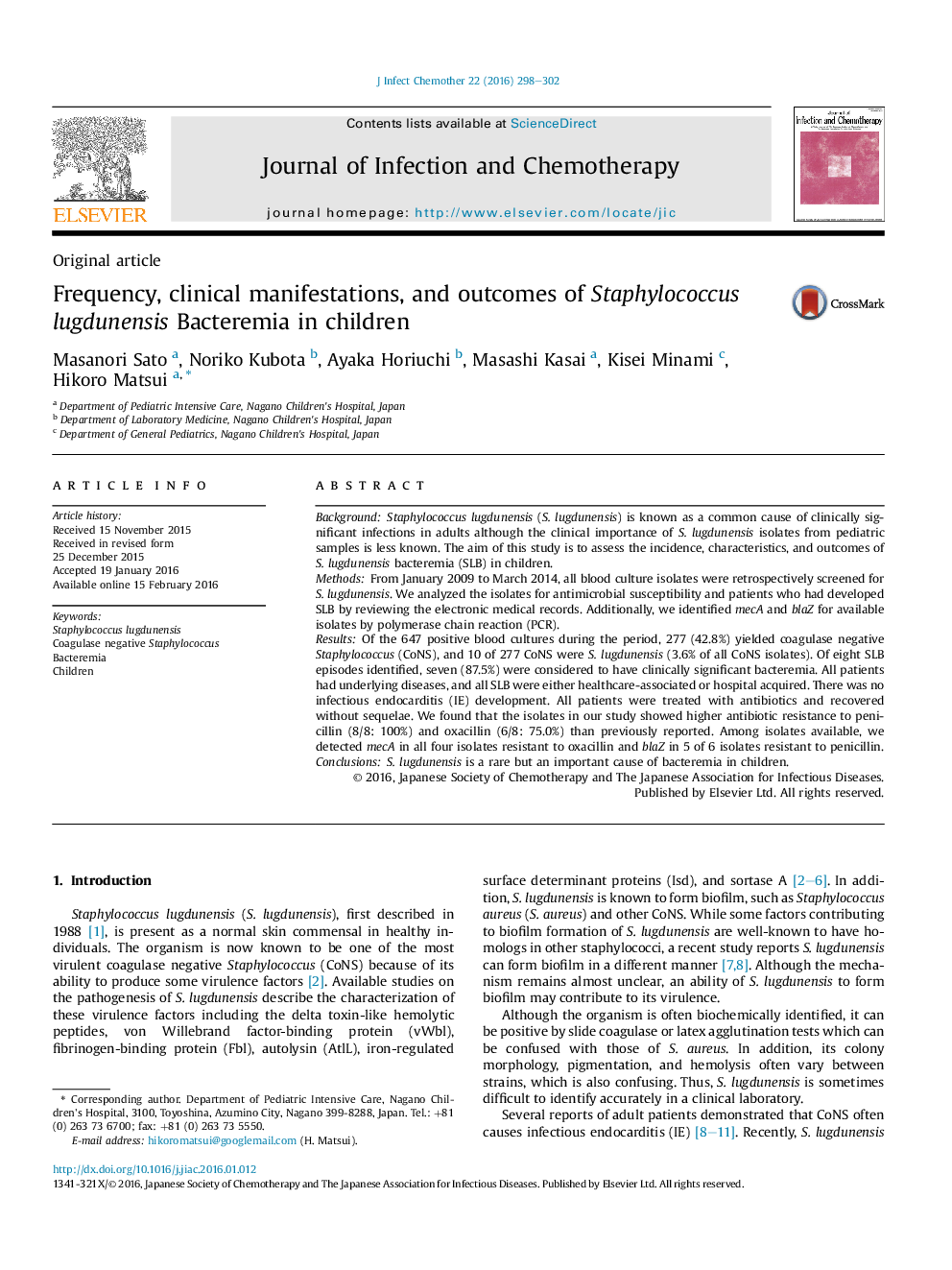| Article ID | Journal | Published Year | Pages | File Type |
|---|---|---|---|---|
| 3376703 | Journal of Infection and Chemotherapy | 2016 | 5 Pages |
BackgroundStaphylococcus lugdunensis (S. lugdunensis) is known as a common cause of clinically significant infections in adults although the clinical importance of S. lugdunensis isolates from pediatric samples is less known. The aim of this study is to assess the incidence, characteristics, and outcomes of S. lugdunensis bacteremia (SLB) in children.MethodsFrom January 2009 to March 2014, all blood culture isolates were retrospectively screened for S. lugdunensis. We analyzed the isolates for antimicrobial susceptibility and patients who had developed SLB by reviewing the electronic medical records. Additionally, we identified mecA and blaZ for available isolates by polymerase chain reaction (PCR).ResultsOf the 647 positive blood cultures during the period, 277 (42.8%) yielded coagulase negative Staphylococcus (CoNS), and 10 of 277 CoNS were S. lugdunensis (3.6% of all CoNS isolates). Of eight SLB episodes identified, seven (87.5%) were considered to have clinically significant bacteremia. All patients had underlying diseases, and all SLB were either healthcare-associated or hospital acquired. There was no infectious endocarditis (IE) development. All patients were treated with antibiotics and recovered without sequelae. We found that the isolates in our study showed higher antibiotic resistance to penicillin (8/8: 100%) and oxacillin (6/8: 75.0%) than previously reported. Among isolates available, we detected mecA in all four isolates resistant to oxacillin and blaZ in 5 of 6 isolates resistant to penicillin.ConclusionsS. lugdunensis is a rare but an important cause of bacteremia in children.
